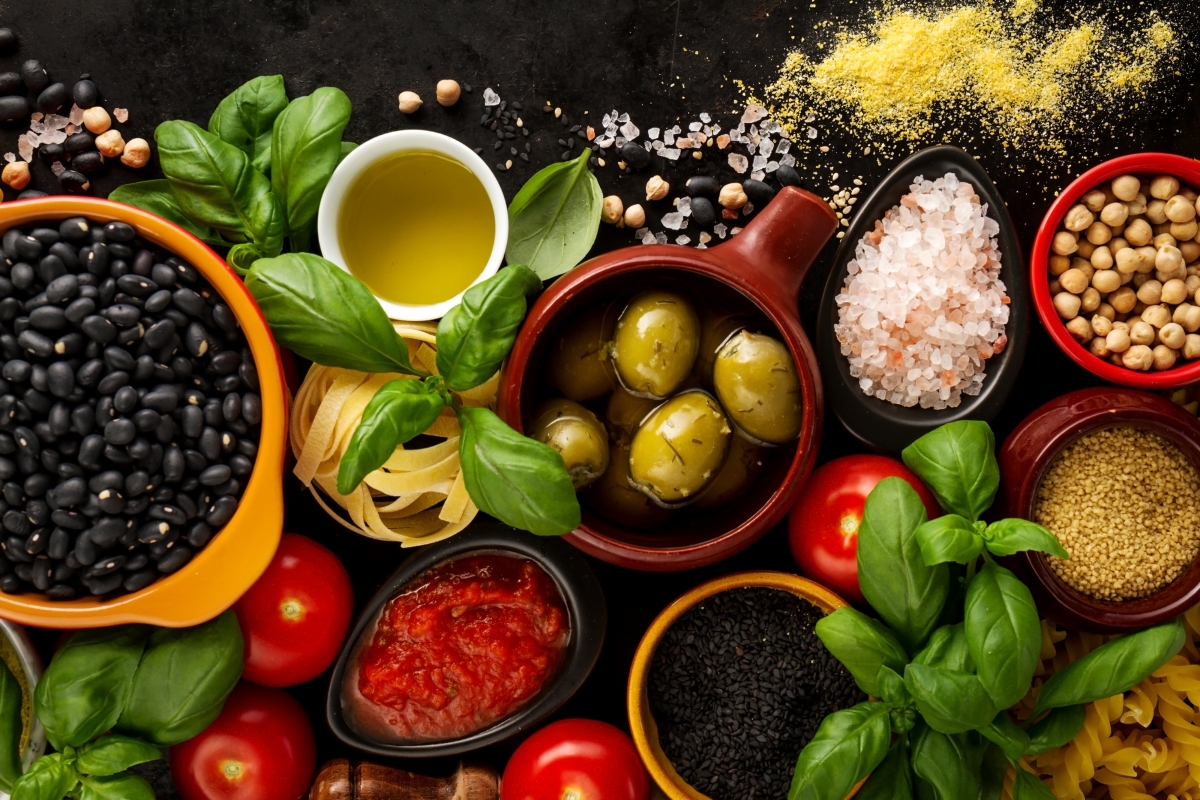Here's to a Healthy Heart

Have you been told you have high cholesterol or that you need to watch your sodium intake? If so, there are two meal plans that may help. The Mediterranean meal plan has been shown to help reduce the risk of heart disease by lowering bad cholesterol (LDL-C) levels which can build up in your arteries; whereas, the dietary approaches to stop hypertension (DASH) meal plan can help you better control your blood pressure levels by eating a variety of nutritious foods and reducing sodium intake.
The Mediterranean meal plan is based on the eating patterns of those who live along the Mediterranean coast. It emphasizes a primarily plant-based diet rich in fruits, vegetables, whole grains, nuts and legumes. Herbs and spices are used for flavoring instead of salt and butter is replaced with monounsaturated fats such as olive oil. Red meats are typically limited to a few times a month, and it is recommended to eat fish and lean poultry at least two times a week.
The DASH approach to eating also emphasizes a diet rich in vegetables and fruits, plus low-fat dairy foods. It also recommends consuming whole grains, fish, poultry and nuts in moderation. Not only can the DASH diet help reduce your sodium intake and lower blood pressure, it can help prevent of osteoporosis, heart disease, stroke and diabetes.
Mediterranean
- Power up with vegetables, fruits and whole grains:
- Strive towards seven to ten servings of vegetables and fruits a day.
- Choose whole grains and opt for brown rice or quinoa instead of white rice.
- Get nutty:
- Keep portioned nuts like almonds, pistachios and cashews on-hand for a quick, healthy snack.
- Pass on the butter:
- Use olive oil or canola oil instead.
- Spice things up:
- Use herbs and spices instead of the salt shaker
- Try dill and lemon on salmon, trout and water-packed tuna.
- Gone fishing:
- Eat fish at least once or twice a week. Salmon, trout, and water-packed tuna are smart choices.
- Reduce the red meat:
- Eat fish or lean poultry instead.
- Raise your glass:
- If it is ok with your healthcare professional, indulge in a five-ounce glass of red wine occasionally throughout the week.
DASH
- Gravitate towards whole grains:
- Six to eight servings per day.
- Look for products that are labeled with 100 percent whole grain or 100 percent whole wheat.
- Get a variety of vegetables:
- Four to five servings a day (two-two and a half cups per day).
- Fresh produce is great, but remember to keep your freezer stocked so you always have vegetables on-hand.
- Don't forget your fruits:
- Four to five servings a day (two-two and a half cups per day).
- Keep a fruit bowl at home or in the office.
- Diversify your dairy:
- Two to three servings a day (two-three eight ounce servings per day).
- Look for low fat milk, yogurt, and cheeses which are high in calcium, vitamin D, and protein.
- Keep it lean with poultry and fish:
- Six servings (Six ounces per day).
- Monitor your portions and trim away any visible fat or skin.
- Go nuts, legumes and seeds:
- Four to five servings a week.
- These are great sources of potassium, protein and magnesium.
- Incorporate healthy fats:
- Two to three servings a day.
- Limit saturated fats and increase your intake of unsaturated fats like avocado and nuts.
- Limit sweets:
- Five servings or fewer a week, don't avoid that cookie completely, but moderation is key.
